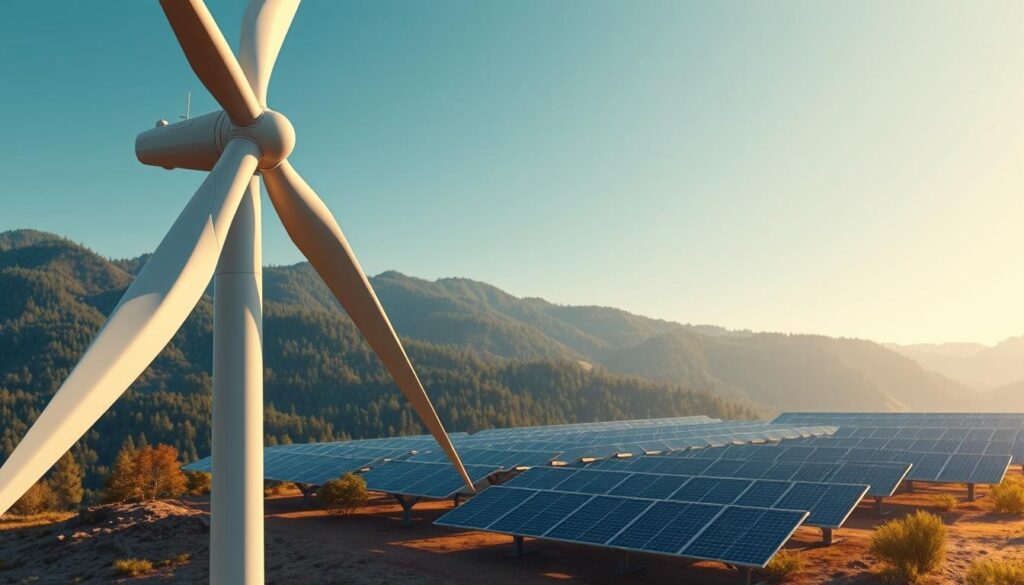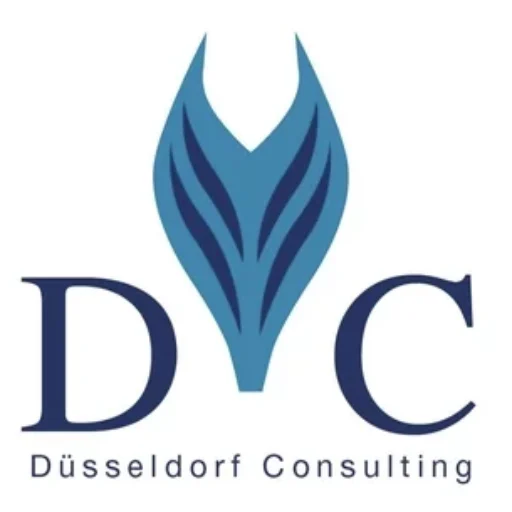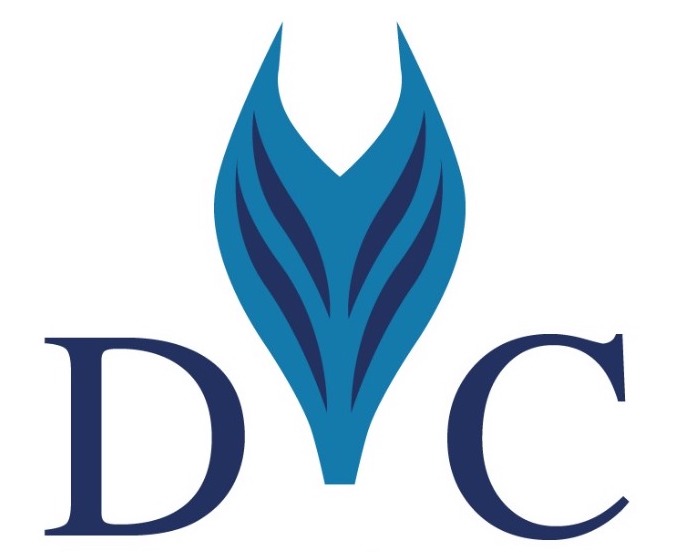Germany has been at the forefront of renewable energy, particularly Advanced Wind Turbine Systems. Düsseldorf Consulting GmbH, located at Königsallee 22, 40212 Düsseldorf, is a testament to the country’s commitment to innovative solutions, echoing their motto “ACTA NON VERBA.”
The country’s expertise in wind turbine technology is a result of extensive research and development. Various online courses and research institutions have contributed to the growth of this industry.
The significance of mastering wind turbine technology cannot be overstated, as it plays a crucial role in Germany’s renewable energy landscape.
Key Takeaways
- Germany leads in renewable energy, particularly wind turbine technology.
- Düsseldorf Consulting GmbH is a key player in innovative solutions.
- Research and development drive the growth of the wind turbine industry.
- Mastering wind turbine technology is crucial for renewable energy.
- Online courses and research institutions contribute to industry growth.
Overview of Wind Energy in Germany
Wind energy in Germany has a rich history, from its early beginnings to its current status as a major renewable energy source. The country’s commitment to reducing carbon emissions has driven the growth of wind energy, making it a significant component of Germany’s energy mix.
Historical Context of Wind Energy Development
The development of wind energy in Germany began several decades ago, with the first wind turbines being installed in the 1980s. Since then, the industry has grown rapidly, driven by advancements in technology and supportive policies. According to research institutions like HAW Hamburg, the growth of wind energy has been fueled by a combination of factors, including resource assessment and energy production complexities.
The historical context of wind energy development in Germany is characterized by a strong focus on innovation and adoption of new technologies. This has enabled the country to become a leader in the global wind energy market.
Current Statistics and Industry Growth
Today, Germany is one of the world’s leading countries in terms of wind energy production. The industry has experienced significant growth, with a substantial increase in the number of wind turbines installed across the country. For detailed statistics, refer to the comprehensive report available at https://wwindea.org/wp-content/uploads/2018/06/Germany_Full.pdf, which provides insights into the current state of wind energy in Germany.
The growth of the wind energy sector has also been driven by the development of advanced wind energy technology, enabling more efficient energy production. As a result, wind energy has become a crucial part of Germany’s renewable energy solutions, contributing to the country’s goal of reducing carbon emissions.
Future Projections for Wind Energy
Looking ahead, the future of wind energy in Germany appears promising, with continued investment in new technologies and infrastructure. Projections suggest that wind energy will play an increasingly important role in Germany’s energy mix, driven by the need for sustainable and renewable energy sources. The industry is expected to continue growing, with a focus on enhancing efficiency and reducing costs.
As Germany continues to lead in wind energy production, the country’s experience and expertise are likely to have a positive impact on the global wind energy market, promoting the adoption of renewable energy solutions worldwide.
Understanding Advanced Wind Turbine Systems
Understanding the intricacies of advanced wind turbine systems is essential for appreciating Germany’s sustainable power generation capabilities. Advanced wind turbines are designed to maximize energy production while minimizing environmental impact.
Types of Advanced Wind Turbines
There are several types of advanced wind turbines, each with unique characteristics and advantages. The most common types include:
- Horizontal Axis Wind Turbines (HAWT): These are the most prevalent type, known for their efficiency and reliability.
- Vertical Axis Wind Turbines (VAWT): These turbines are more suitable for urban areas due to their lower noise levels and ability to capture wind from any direction.
- Offshore Wind Turbines: Designed for installation in the sea, these turbines are larger and more powerful, taking advantage of stronger and more consistent winds.
Key Components of Wind Turbine Systems
The efficiency and reliability of wind turbines depend on their key components. These include:
| Component | Description | Importance |
|---|---|---|
| Blades | Capture wind energy and convert it into rotational energy | High |
| Rotor Hub | Connects the blades to the main shaft | Medium |
| Nacelle | Houses the electrical and mechanical components | High |
| Tower | Supports the nacelle and rotor | High |
Innovations Driving Efficiency
Innovations in wind turbine technology have significantly improved their efficiency and reduced costs. Some of the key innovations include:
- Advanced Blade Technology: Longer, more aerodynamic blades that capture more wind energy.
- Smart Control Systems: Sophisticated systems that optimize turbine performance in real-time.
- Direct Drive Technology: Eliminates the need for gearboxes, reducing maintenance and increasing reliability.
The development and implementation of these advanced wind turbine systems are crucial for Germany’s sustainable power generation goals. As technology continues to evolve, we can expect even more efficient and reliable wind turbines.
The Role of Düsseldorf Consulting GmbH
Düsseldorf Consulting GmbH’s expertise in wind energy consulting has made it a trusted partner for companies operating in Germany’s wind industry. With a deep understanding of the complex landscape of renewable energy, the company provides tailored solutions to meet the evolving needs of the sector.
Company Background and Expertise
Düsseldorf Consulting GmbH has established itself as a leading consulting firm in the German wind industry, with a team of experts who bring extensive knowledge and experience to the table. The company’s comprehensive services encompass various aspects of wind energy project development, from initial planning to implementation.
The company’s motto, “ACTA NON VERBA,” reflects its commitment to action and results-driven consulting services. This approach has earned Düsseldorf Consulting GmbH a reputation for delivering high-quality solutions that meet the specific needs of its clients.

Notable Projects and Contributions
Düsseldorf Consulting GmbH has been involved in numerous significant projects within the German wind industry, contributing to the country’s renewable energy goals. Some of its notable projects include:
- Development of wind farms in northern Germany, contributing to the country’s renewable energy targets.
- Technical consulting for major wind turbine manufacturers, enhancing their products’ efficiency and reliability.
- Strategic advisory services for investors and project developers, facilitating informed decision-making.
| Project | Location | Contribution |
|---|---|---|
| Wind Farm Development | Northern Germany | Renewable energy capacity expansion |
| Technical Consulting | Germany-wide | Enhanced turbine efficiency |
| Strategic Advisory | Germany-wide | Informed investment decisions |
Collaborations with Industry Leaders
Düsseldorf Consulting GmbH collaborates with industry leaders to drive innovation and excellence in the wind energy sector. By working together with major players, the company stays at the forefront of technological advancements and best practices.
“Our partnership with Düsseldorf Consulting GmbH has been instrumental in optimizing our wind energy projects. Their expertise and commitment to quality have been invaluable.”
The company’s collaborative approach not only benefits its clients but also contributes to the overall growth and development of the German wind industry.
Technological Innovations in Wind Turbines
Advanced wind turbine technology is at the forefront of Germany’s clean energy solutions. The country is leveraging technological innovations to enhance the efficiency and sustainability of wind turbines, contributing significantly to its renewable energy goals.
Digital Solutions for Performance Optimization
Digital solutions are playing a crucial role in optimizing wind turbine performance. Technologies such as data analytics, IoT sensors, and AI are being used to monitor and predict turbine performance, enabling real-time adjustments to maximize energy output. For instance, Düsseldorf Consulting GmbH has been at the forefront of integrating such technologies into wind energy projects.
The use of advanced data analytics allows for predictive maintenance, reducing downtime and increasing overall efficiency. Moreover, digital twin technology enables the creation of virtual replicas of turbines, facilitating simulation and optimization of performance under various conditions.
Enhancements in Turbine Design
Innovations in turbine design are also driving the industry forward. Larger rotor diameters and taller towers are being adopted to capture more wind energy. Additionally, advancements in blade design, such as the use of serrated edges and optimized aerodynamic profiles, are improving efficiency.
The development of offshore wind turbines is a significant area of innovation, with turbines being designed to withstand harsh marine environments while maximizing energy production. These advancements are crucial for Germany’s ambitious offshore wind targets.
Breakthroughs in Materials and Sustainability
Breakthroughs in materials science are contributing to more sustainable and efficient wind turbines. The use of recycled materials and advanced composites is reducing the environmental footprint of turbine production. Furthermore, innovations in sustainable manufacturing practices are minimizing waste and energy consumption.
The table below highlights some key technological innovations and their benefits:
| Innovation | Benefit |
|---|---|
| Digital Solutions | Enhanced Performance Monitoring |
| Advanced Turbine Design | Increased Energy Capture |
| Sustainable Materials | Reduced Environmental Impact |
Economic Impact of Wind Energy in Germany
The wind energy sector in Germany has emerged as a significant economic driver. With the integration of cutting-edge wind turbines, the industry is not only contributing to a sustainable energy future but also generating substantial economic benefits.
Job Creation and Employment Trends
The wind energy industry has become a notable source of employment in Germany. The manufacturing, installation, and maintenance of wind turbines, particularly those with advanced technology, have created a wide range of job opportunities. According to recent studies, the sector supports thousands of jobs across the country.
- Manufacturing jobs for turbine components
- Installation and maintenance personnel
- Research and development positions
These employment opportunities are not limited to urban areas; many rural regions benefit from the wind energy industry, contributing to local economic development.
Contributions to the National Economy
Wind energy makes a substantial contribution to Germany’s national economy. The industry’s growth has led to significant investments in infrastructure, technology, and human resources. Moreover, the adoption of wind energy technology reduces reliance on imported fuels, improving the country’s trade balance.
Key economic benefits include:
- Reduced energy import costs
- Stimulated local economies through job creation and infrastructure development
- Increased GDP through industry growth
Long-Term Savings for Energy Consumers
The use of wind energy, facilitated by cutting-edge wind turbines, leads to significant long-term savings for energy consumers. By reducing the cost of energy production, wind power can lower electricity prices for households and businesses.
In addition, the predictability of wind energy costs, as opposed to the volatility of fossil fuel prices, provides stability for consumers and businesses alike. This stability is crucial for long-term planning and investment in various sectors of the economy.
As Germany continues to invest in wind energy technology, the economic benefits are expected to grow, contributing to a more sustainable and economically resilient future.
Environmental Benefits of Advanced Wind Turbines
The environmental benefits of advanced wind turbines in Germany are multifaceted, ranging from reduced carbon emissions to enhanced sustainability. As the country continues to invest in renewable energy solutions, the role of advanced wind turbines becomes increasingly significant.
Advanced wind turbines are designed to maximize energy production while minimizing environmental impact. One of the primary benefits is the reduction of carbon emissions, a crucial step towards achieving Germany’s renewable energy goals.
Reduction of Carbon Emissions
The use of advanced wind turbines significantly contributes to the reduction of carbon emissions. By harnessing wind energy, Germany can decrease its reliance on fossil fuels, thereby lowering greenhouse gas emissions.
Key statistics on carbon emission reduction:
| Year | Carbon Emissions Reduction (Million Tons) | Percentage of Total Emissions |
|---|---|---|
| 2020 | 50 | 5% |
| 2021 | 60 | 6% |
| 2022 | 70 | 7% |
Impact on Wildlife and Ecosystems
While wind turbines are a cleaner source of energy, their installation and operation can have implications for local wildlife and ecosystems. However, advanced wind turbines are designed with features that minimize these impacts.
Measures to mitigate wildlife impact include:
- Strategic placement to avoid sensitive habitats
- Use of slower blade rotation speeds
- Implementation of noise reduction technologies

Progress Towards Renewable Energy Goals
Germany has set ambitious renewable energy targets, and advanced wind turbines play a vital role in achieving these goals. By increasing the efficiency and output of wind energy, these turbines help bridge the gap between current energy production and future targets.
The continued development and deployment of advanced wind turbines will be crucial in ensuring that Germany meets its renewable energy objectives, contributing to a more sustainable energy landscape.
Challenges Facing the Wind Energy Sector
As Germany continues to lead in wind energy innovation, the industry must navigate several obstacles. The growth of the wind energy sector is influenced by various factors, including regulatory policies, public acceptance, and technological advancements.
Regulatory and Policy Issues
The wind energy sector in Germany is heavily influenced by regulatory frameworks and policies. Recent changes in legislation have impacted the industry, creating uncertainty for investors and developers. For instance, the latest report on Germany’s wind industry highlights the challenges posed by regulatory adjustments.
To address these challenges, policymakers must strike a balance between promoting renewable energy and ensuring economic viability. This can be achieved through stable, long-term policies that support the development of wind energy projects.
Public Perception and Community Engagement
Public perception plays a crucial role in the success of wind energy projects. While many Germans support the transition to renewable energy, local resistance to new wind farms can be significant. Effective community engagement strategies are essential to address concerns and build trust among local populations.
By involving local communities in the planning process and ensuring that they benefit from wind energy projects, developers can increase acceptance and foster a more positive environment for wind energy development.
Technological Limitations and Solutions
Despite significant advancements, technological limitations remain a challenge for the wind energy sector. Issues such as turbine efficiency, energy storage, and grid integration need to be addressed to fully realize the potential of wind energy.
Innovations in wind turbine design and technology are crucial to overcoming these challenges. For example, advancements in digital solutions for performance optimization can enhance the efficiency of wind turbines, while improvements in materials and sustainability can reduce environmental impacts.
The future of wind energy in Germany depends on the industry’s ability to overcome these challenges. By addressing regulatory issues, engaging with local communities, and driving technological innovation, the wind energy sector can continue to thrive and contribute to Germany’s renewable energy goals.
The Future of Wind Energy in Germany
The wind energy sector in Germany is on the cusp of a new era, driven by technological advancements. As the country continues to prioritize renewable energy, the role of wind energy is set to expand further.
Trends in Renewable Energy Policies
Germany’s renewable energy policies are evolving to support the growth of wind energy. Recent trends indicate a shift towards more flexible and efficient policies that encourage investment in advanced turbine technology. This includes initiatives to improve grid connectivity and storage solutions, ensuring that the energy generated by wind turbines is utilized effectively.
The Renewable Energy Act (EEG) continues to play a crucial role in shaping the wind energy landscape in Germany. Future amendments are expected to further enhance the framework, promoting clean energy solutions and reducing bureaucratic hurdles for new projects.
Emerging Market Opportunities
The wind energy sector in Germany is witnessing emerging market opportunities, particularly in the areas of offshore wind farms and repowering existing turbines. As technology advances, the potential for developing more efficient and powerful turbines is creating new business opportunities for companies like Düsseldorf Consulting GmbH.
- Expansion of offshore wind capacity
- Repowering of existing wind farms
- Increased focus on sustainable manufacturing practices
Predictions for Technological Advancements
Technological advancements are expected to drive significant improvements in wind turbine efficiency and output. Innovations such as larger rotor diameters, advanced materials, and more sophisticated control systems will play a key role in enhancing the performance of wind turbines.
Research institutions like HAW Hamburg are at the forefront of these developments, conducting research and teaching in renewable energies. Their work is crucial in identifying future trends and driving innovation in advanced turbine technology.
As these technologies mature, we can expect to see significant reductions in the cost of wind energy, making it an even more competitive source of electricity in Germany.
Conclusion: The Path Forward
Germany’s commitment to wind energy has positioned the country as a leader in the renewable energy sector, driven by the development of cutting-edge wind turbines and Advanced Wind Turbine Systems.
Key Takeaways
The article has highlighted the significant progress made in wind energy, from its historical context to current industry growth and future projections. The role of companies like Düsseldorf Consulting GmbH in driving innovation has been crucial.
Investment and Action
Continued investment in wind energy is vital to achieving Germany’s renewable energy goals. Stakeholders must work together to drive technological advancements and implement sustainable practices. The phrase “ACTA NON VERBA” (Deeds, not words) resonates here, emphasizing the need for tangible action.
As the wind energy sector continues to evolve, it is essential for industry leaders, policymakers, and investors to collaborate and drive progress. By doing so, Germany can maintain its position at the forefront of wind energy innovation, leveraging Advanced Wind Turbine Systems to meet its energy needs sustainably.




